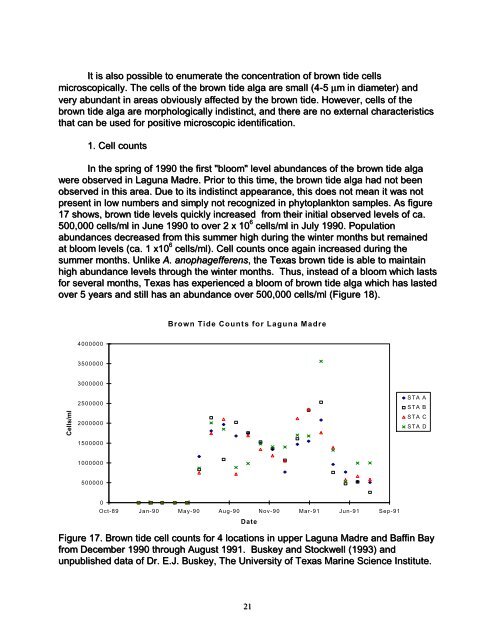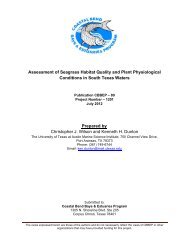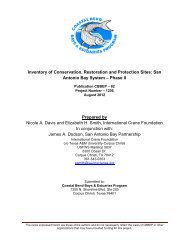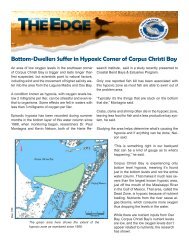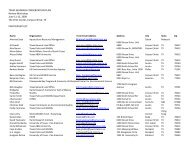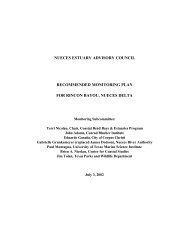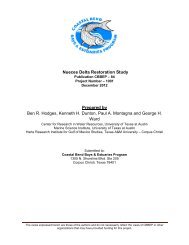Current Status and Historical Trends of Brown Tide and Red Tide ...
Current Status and Historical Trends of Brown Tide and Red Tide ...
Current Status and Historical Trends of Brown Tide and Red Tide ...
- No tags were found...
You also want an ePaper? Increase the reach of your titles
YUMPU automatically turns print PDFs into web optimized ePapers that Google loves.
It is also possible to enumerate the concentration <strong>of</strong> brown tide cellsmicroscopically. The cells <strong>of</strong> the brown tide alga are small (4-5 µm in diameter) <strong>and</strong>very abundant in areas obviously affected by the brown tide. However, cells <strong>of</strong> thebrown tide alga are morphologically indistinct, <strong>and</strong> there are no external characteristicsthat can be used for positive microscopic identification.1. Cell countsIn the spring <strong>of</strong> 1990 the first "bloom" level abundances <strong>of</strong> the brown tide algawere observed in Laguna Madre. Prior to this time, the brown tide alga had not beenobserved in this area. Due to its indistinct appearance, this does not mean it was notpresent in low numbers <strong>and</strong> simply not recognized in phytoplankton samples. As figure17 shows, brown tide levels quickly increased from their initial observed levels <strong>of</strong> ca.500,000 cells/ml in June 1990 to over 2 x 10 6 cells/ml in July 1990. Populationabundances decreased from this summer high during the winter months but remainedat bloom levels (ca. 1 x10 6 cells/ml). Cell counts once again increased during thesummer months. Unlike A. anophagefferens, the Texas brown tide is able to maintainhigh abundance levels through the winter months. Thus, instead <strong>of</strong> a bloom which lastsfor several months, Texas has experienced a bloom <strong>of</strong> brown tide alga which has lastedover 5 years <strong>and</strong> still has an abundance over 500,000 cells/ml (Figure 18).<strong>Brown</strong> <strong>Tide</strong> Counts for Laguna Madre400000035000003000000Cells/ml250000020000001500000STA ASTA BSTA CSTA D10000005000000Oct-89 Jan-90 May-90 Aug-90 Nov-90 Mar-91 Jun-91 Sep-91DateFigure 17. <strong>Brown</strong> tide cell counts for 4 locations in upper Laguna Madre <strong>and</strong> Baffin Bayfrom December 1990 through August 1991. Buskey <strong>and</strong> Stockwell (1993) <strong>and</strong>unpublished data <strong>of</strong> Dr. E.J. Buskey, The University <strong>of</strong> Texas Marine Science Institute.21


